Budget. The word alone sends chills to many people. You might even be asking yourself, “Why do I need a budget?”
STEP ONE – Understand That Budgeting Is Nothing More Than “Telling Your Money Where To Go.”
This is the largest hurdle of any part of budgeting. The rest of budgeting is a breeze once you understand what a true budget is. Once you have internalized Step One, it is time for Step Two.
STEP TWO – Determine The Income (Take-Home Pay) You Will Receive During The NEXT Month.
There is a very key word in Step Two – the word “NEXT”. I have learned that preparing a budget for money that has already been spent is not very fruitful. It is like being a Monday-morning quarterback for your finances. You want to get that money back. You wish you could have that money back. But it is GONE!
The budget must be completed BEFORE the month begins and BEFORE the money ever arrives. You are developing a spending plan for your money BEFORE you ever get it. The only way I have found to stop saying “I can’t believe I spent my money that way” and “I wish I could have that money back” is to develop a spending plan BEFORE the money was paid to me for the month.
So, think about it. What income will you receive during the next month?
Here Are Some Common Ways That People Receive Money During The Month:
Paycheck
Bonus
Side Job Income
Child Support
Alimony
Whatever your source of income is, write it down. In fact, write it down and put the dates that you will be paid this money during the next month. If your income is unpredictable, write down the amount of money that you can count on.
If you have at least one month’s worth of expenses in the bank, download the [Monthly Budget].
Because you have at least one month’s worth of expenses in the bank, you can sum up your total income and enter the total income in the Income section at the top of the budget form.
If you are living paycheck-to-paycheck, download the [Weekly Budget].
Because you cannot pay all your bills at the start of the month, you will need to develop a budget for each individual paycheck. Make the dates at the top of the budget form match up to your income dates and enter the income in the Income section at the top of the budget form.
This income is what you will be spending on paper BEFORE the month, the money, and the bills ever arrive!
STEP THREE – Enter All Of Your Expenses For The NEXT Month.
This is where you spend your money on paper! In Step Two, you determined your total income for the next month, and it is now time to spend it on paper BEFORE the month arrives!
These expenses are the real, actual expenses that will happen. Not averages! Enter the real expense because this budget needs to be highly relevant to the next month.
If the expenses are not relevant to the next month, it is highly possible that you will consider the budget irrelevant for the next month. If you don’t know the ACTUAL cost (utilities, gasoline, etc.), enter an educated guess based on recent spending.
The Budget Form Has Some Excellent Features Built Into It:
If OUTGO exceeds INCOME, the TOTAL will turn RED and tell you how much you have overspent!
If INCOME exceeds OUTGO, the TOTAL will turn YELLOW and tell you how much more money needs named!
When INCOME = OUTGO, the TOTAL will turn GREEN … This is the ultimate goal!
Even if the budget TOTAL turns RED, keep typing in the expenses you know will happen in the upcoming month. The goal is to get all of the known expenses for the next month on paper.
YES, you will later have to remove some expenses or boost your income to get to GREEN, but the goal right now is to get all of the expenses into the budget form! By having all of the expenses in the budget, you can make a much more informed choice on what will be removed from the budget.
STEP FOUR – INCOME – OUTGO = EXACTLY ZERO
Your income is limited. If you bring home $3,000 during the next month and spend $3,320, your spending plan will not work! Where will the $320 come from? It will have to come from savings OR from debt – usually in the form of a credit card.
YOUR INCOME IS LIMITED! Let me take it one step further. Let’s say you are really blessed and bring home $70,000 during the next month (don’t laugh – many people do!). If you spend $71,320, your spending plan will not work! The $1,320 will have to come from somewhere – and many times it is made up with debt.
In STEPS TWO and THREE, we entered all of the income and expenses into the budget and, no surprise, the OUTGO exceeded the INCOME.
There Are Two Options When The OUTGO Exceeds INCOME:
Increase the INCOME – 2nd job, Overtime, side job
Decrease the OUTGO – Decrease the expenses
STEP FIVE – Follow The Budget!
You have followed all of the steps. You now have a spending plan for the next month. It is time to live by it! After all, it was YOU who told your money where to go! Why wouldn’t you follow YOUR plan?
As I have helped others develop their own spending plans, I have seen people completely break free of debt. I have seen people pay off their mortgages, marriages restored, and the hopeless become hopeful!
That is what your budget will allow you to do! Develop a spending plan every single month BEFORE the month and the money arrives and then FOLLOW it! You will never regret this decision.

